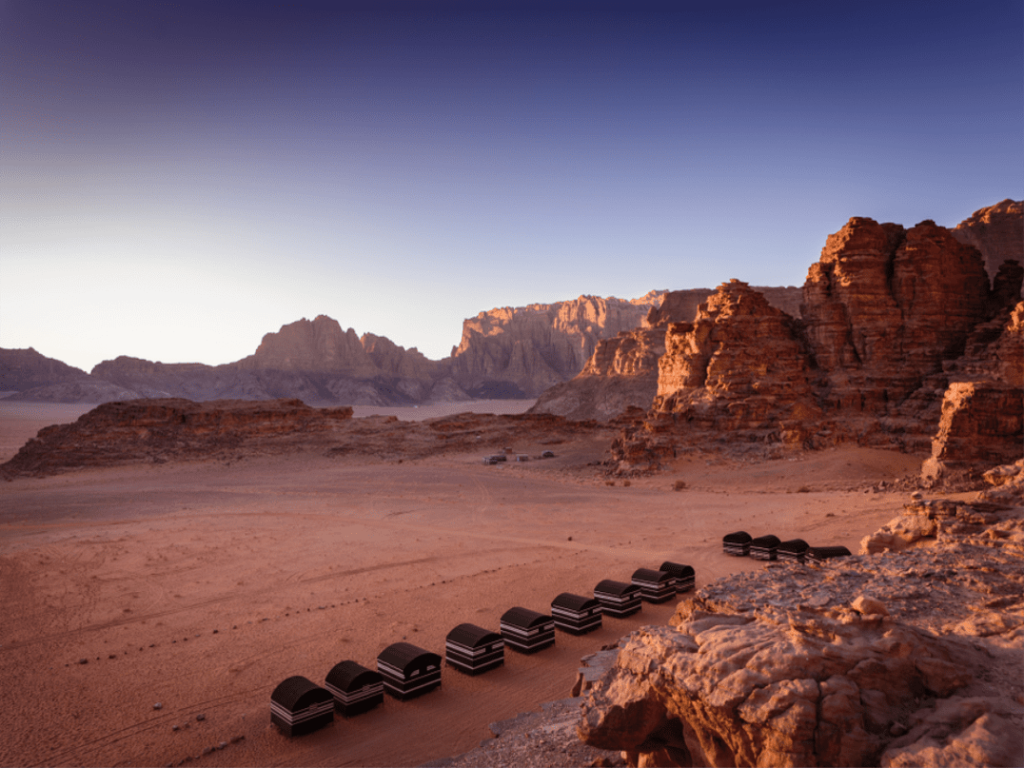Wadi Rum is a breathtaking expanse of desert wilderness in southern Jordan that will transport you to another world! Often called the “Valley of the Moon,” this stunning landscape of towering sandstone mountains, vast sandy plains, and ancient rock formations has captivated travelers for centuries. Whether you’re dreaming of exploring the Wadi Rum desert, planning a trip to Wadi Rum Jordan, or simply curious about the unique desert Jordan experience and the fascinating Wadi Rum geology, this article will guide you through the magic of this extraordinary place.
A Landscape Shaped by Time: The Geology of Wadi Rum
The dramatic beauty of Wadi Rum is a testament to millions of years of geological processes. The towering sandstone and granite mountains, sculpted by wind and water erosion, rise majestically from the sandy desert floor. Understanding the Wadi Rum geology unveils the secrets behind its unique formations:
- Ancient Uplift: The area was once part of a higher plateau that fractured and eroded over time.
- Sandstone Dominance: The vibrant colors of the rocks, ranging from ochre and red to brown and yellow, are due to the iron oxide content in the sandstone.
- Wind and Water Carving: The intricate shapes of the mountains, with their rounded domes, sharp cliffs, and narrow siqs (canyons), are the result of relentless erosion by windblown sand and occasional flash floods.
- Granite Base: In some areas, the older granite bedrock is exposed, adding to the geological diversity of the Wadi Rum desert.
- Sand Dunes: Shifting sand dunes, often colored red by iron oxides, create a dynamic and ever-changing landscape within Wadi Rum Jordan.
More Than Sand: Exploring the Wonders of Wadi Rum
While often referred to as a desert Jordan experience, Wadi Rum offers much more than just sand. Its unique topography supports a surprising array of activities and sights:
- Rock Formations: Discover iconic landmarks like the Seven Pillars of Wisdom, Mushroom Rock, and Um Fruth Rock Bridge.
- Ancient Inscriptions: Explore canyons and rock faces adorned with Nabataean and pre-Nabataean inscriptions and petroglyphs, offering glimpses into the area’s rich human history.
- Bedouin Culture: Experience the traditional hospitality of the Bedouin people, who have called Wadi Rum home for centuries. Enjoy their traditional food, music, and stories.
- Stargazing: With its clear desert skies and minimal light pollution, Wadi Rum is a world-renowned destination for stargazing.
- Adventure Activities: Embark on thrilling jeep tours, camel treks, hiking expeditions, and rock climbing adventures through the stunning Wadi Rum desert.
Your Journey to the Valley of the Moon: Visiting the Desert
Planning a trip to Wadi Rum is an experience you won’t soon forget. Getting there is relatively straightforward, and various accommodation options cater to different preferences:
Getting to Wadi Rum:
- Location: Situated in southern Jordan, approximately 60 kilometers east of Aqaba.
- Transportation: You can reach Wadi Rum by car (rental or taxi) from Aqaba, Petra, or Amman. Public buses also run to the nearby town of Wadi Rum Village.
- Entry Point: Most tours and accommodations are accessed through the Wadi Rum Visitor Center, where you’ll need to pay an entrance fee (included in the Jordan Pass).
Accommodation Options:
- Traditional Bedouin Camps: Experience authentic desert living in traditional tents, ranging from basic to more luxurious options with modern amenities.
- Bubble Tents: Enjoy a unique glamping experience in transparent dome tents that offer incredible views of the night sky.
- Eco-Lodges: Find comfortable and sustainable lodging options that blend seamlessly with the natural environment.
Things to Do in Wadi Rum:
- Jeep Tours: The most popular way to explore the vastness of Wadi Rum desert and reach key attractions. Tours range from a few hours to full-day or multi-day adventures.
- Camel Treks: Experience the desert from a traditional perspective, riding camels through the stunning landscapes.
- Hiking and Scrambling: Explore canyons and climb smaller rock formations on foot. Guided hikes are recommended for safety.
- Hot Air Balloon Rides: For a truly unforgettable experience, take a sunrise hot air balloon ride over Wadi Rum.
- Sandboarding: Slide down some of Jordan’s impressive sand dunes
Embracing the Magic of Desert Jordan in Wadi Rum
Wadi Rum is more than just a desert Jordan destination; it’s a place that stirs the soul with its raw beauty, ancient history, and the warmth of its Bedouin culture. The dramatic Wadi Rum geology has created a landscape unlike any other, offering a sense of peace and adventure.
To further enrich your understanding of Jordan culture and the Arabic language, we invite you to visit www.kaleela.com. Our platform offers engaging lessons and cultural insights to enhance your learning experience. Download the Kaleela Arabic learning app today and let the spirit of Wadi Rum inspire your journey into the heart of the Arab world!



